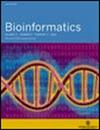LMCrot:通过利用基于转换器的蛋白质语言模型的可解释窗口级嵌入,增强蛋白质巴豆酰化位点预测器。
IF 4.4
3区 生物学
Q1 BIOCHEMICAL RESEARCH METHODS
引用次数: 0
摘要
动机自然语言处理领域的最新进展凸显了蛋白质语言模型(pLMs)的全局上下文表征在众多下游任务中的有效性。结果在本文中,我们采用了一系列利用 pLM 的方法,尝试了不同的输入序列类型(全长蛋白质序列和窗口序列),评估了利用兴趣点的每残基嵌入以及以兴趣点为中心的窗口残基嵌入的影响。基于这些见解,我们开发了一种新型残差 ConvBiLSTM 网络,旨在处理 ProtT5-XL-UniRef50 pLM 使用全长序列作为输入生成的兴趣点窗口级嵌入。这个被称为 T5ResConvBiLSTM 的模型在三个不同数据集上的性能超过了现有的最先进 Kcr 预测器。为了验证我们利用基于全序列的窗口级嵌入的方法,我们还通过两种方式深入研究了 ProtT5 衍生的嵌入张量的可解释性:首先,我们仔细研究了从变换器编码器块中获得的注意力权重;其次,我们计算了这些张量的 SHAP 值,为预测结果提供了与模型无关的解释。此外,我们还通过中间融合堆叠泛化方法,使用 n 聚体窗口序列(或肽片段),加入了两个额外的局部表征,一个来自氨基酸特性,另一个来自监督嵌入层,从而增强了 ProtT5 的潜在表征。由此产生的堆叠模型被命名为 LMCrot,在测试数据集的预测性能方面有了更明显的提高。可用性和实施LMCrot 可在 https://github.com/KCLabMTU/LMCrot 网站上公开获取。本文章由计算机程序翻译,如有差异,请以英文原文为准。
LMCrot: An enhanced protein crotonylation site predictor by leveraging an interpretable window-level embedding from a transformer-based protein language model.
MOTIVATION
Recent advancements in natural language processing have highlighted the effectiveness of global contextualized representations from Protein Language Models (pLMs) in numerous downstream tasks. Nonetheless, strategies to encode the site-of-interest leveraging pLMs for per-residue prediction tasks, such as crotonylation (Kcr) prediction, remain largely uncharted.
RESULTS
Herein, we adopt a range of approaches for utilizing pLMs by experimenting with different input sequence types (full-length protein sequence versus window sequence), assessing the implications of utilizing per-residue embedding of the site-of-interest as well as embeddings of window residues centered around it. Building upon these insights, we developed a novel residual ConvBiLSTM network designed to process window-level embeddings of the site-of-interest generated by the ProtT5-XL-UniRef50 pLM using full-length sequences as input. This model, termed T5ResConvBiLSTM, surpasses existing state-of-the-art Kcr predictors in performance across three diverse datasets. To validate our approach of utilizing full sequence-based window-level embeddings, we also delved into the interpretability of ProtT5-derived embedding tensors in two ways: firstly, by scrutinizing the attention weights obtained from the transformer's encoder block; and secondly, by computing SHAP values for these tensors, providing a model-agnostic interpretation of the prediction results. Additionally, we enhance the latent representation of ProtT5 by incorporating two additional local representations, one derived from amino acid properties and the other from supervised embedding layer, through an intermediate-fusion stacked generalization approach, using an n-mer window sequence (or, peptide fragment). The resultant stacked model, dubbed LMCrot, exhibits a more pronounced improvement in predictive performance across the tested datasets.
AVAILABILITY AND IMPLEMENTATION
LMCrot is publicly available at https://github.com/KCLabMTU/LMCrot.
求助全文
通过发布文献求助,成功后即可免费获取论文全文。
去求助
来源期刊

Bioinformatics
生物-生化研究方法
CiteScore
11.20
自引率
5.20%
发文量
753
审稿时长
2.1 months
期刊介绍:
The leading journal in its field, Bioinformatics publishes the highest quality scientific papers and review articles of interest to academic and industrial researchers. Its main focus is on new developments in genome bioinformatics and computational biology. Two distinct sections within the journal - Discovery Notes and Application Notes- focus on shorter papers; the former reporting biologically interesting discoveries using computational methods, the latter exploring the applications used for experiments.
 求助内容:
求助内容: 应助结果提醒方式:
应助结果提醒方式:


